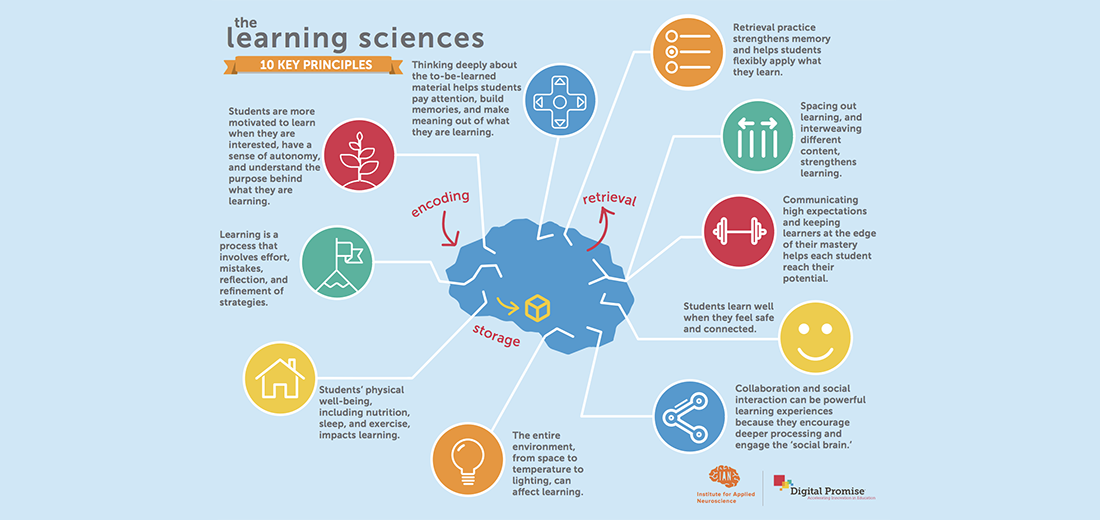
Are you looking to learn what scientists have discovered about how people learn, and how to apply this information to your work in a school or classroom?
Neuroscience research has shown that learning in the brain happens in three phases: encoding (transforming experience into long-term memory), consolidation (storing and maintaining information over time) and retrieval (accessing information when needed). Additionally, researchers have discovered that the environment in which students learn, including the physical space as well as social and emotional factors, can impact learning.
Digital Promise and the Institute for Applied Neuroscience have teamed up to synthesize findings from the growing field of learning sciences research into 10 key insights about how people learn, along with suggestions for how to apply this information to classroom practice. Download these resources in the form of a poster to hang on your classroom wall, or a set of cards to take on-the-go. Below, click to expand each learning sciences insight to access more detail on the research and tips to apply it in practice.
Click each insight for more information about what the research shows and for tips on how to apply the insight in practice.

This work is licensed under a Creative Commons Attribution 4.0 International License.